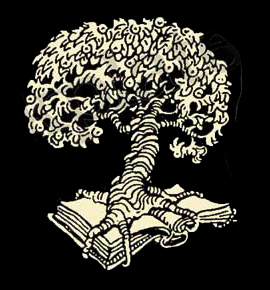 The way to learn morse code is to start slowly, practice with a few letters, continually expand that group of letters, and practice often. During WW2, the US Army discovered if they woke the trainees up in the middle of the night, gave them a half hour of practice and sent them back to bed, they learned faster. My absolute favorite learning site was created by Kurt Zoglmann, ADØWE who is on the staff at Kansas State University in Manhattan, Kansas. There are two links but they really come off of one of his main pages. The first one teaches letters beginning with T. Then the second letter (A) can be selected to combine with T and now you have two letters. The third letter (E) will combine with T and A, etc. The great news here is that at this point in your practice, if you get hungry, you can say, "EAT." The speed on the program is good. The Farnsworth method used is where the letter is sent faster and the pause between characters is longer. I've not talked with Kurt by voice, but we have exchanged a number of email. He did this site because of a love of CW and helping others to enjoy learning CW. When you are comfortable with all the letters, the second link will get you to a chart with many choices. Choose 15 wpm at first and then as soon as you make your second selection of content, it will zoom off to what you want. I like the US state and Canadian province abbreviations. I know there are going to be only two letters, and I also know what all the abbreviations stand for.... I'm ready to copy. Then see if you can do it without writing the two letters down. That's called, "head copy." There are also lots of other choices in content. Kurt struggled with learning CW in the beginning, and thus: The Morse Code Ninja. Morse Code Ninja - Beginning Morse Code Ninja - Further along ...and interesting information about an organization called CWops.org. Here's an international one you ought to join: Straight Key Century Club - https://www.skccgroup.com/. It's free to become a member. The only requirement is a ham license of any class from any country. Put AUS in their search engine and see all the members from Australia. I worked for the state police in Iowa as a summer replacement dispatcher and operator for six years as my college summer job. One of my functions was as a CW operator for the state police interstate network. This was before the police interstate teletype system was set up. If a state, city or county officer wanted information on an out-of-state vehicle or driver, it was done on CW. The CW stations were set up in the capital cities in every state in the US. I was pleased to be able to do it because it put time on my commercial FCC Radiotelegraph license which was needed for renewal purposes at the time. My 1st Class FCC Radiotelephone license got me the job. It was a great experience. I personally feel that CW is true ham radio dating from the early 20th Century. I have spent time with three really-old-timers who were fantastic CW operators, partly because that's all there was in the beginning. One was Ken in Des Moines, Iowa. He was licensed by the US Post Office in 1916, and his call was 9LO. Later in 1927 that became W9LO and then after WW2, he became WØLO when the 9th area was split up. The second was Earl in Gainesville, Florida. He was licensed in 1931 and was W4NG. His entire career was as a merchant marine CW operator. One time at a club meeting, we gave the 5 wpm Novice CW exam to those present as a demonstration. Earl couldn't copy 5 wpm. He was fine at 40 to 60 wpm. The third was Don in Rancho Palos Verdes, California. He was on the air in 1909 (at the age of 10) before there were licenses. Don, W6AM was a world-famous ham in the mid 20th Century. I visited Don at his California hamshack in 1980 when he was 81. Don asked me if I wanted to operate his station; I jumped at the chance. Then when I got into a CW QSO with a station in Europe, Don started talking to me at the same time that I was sending. He could easily carry on two conversations at the same time, one on CW. A beautiful example of multi-tasking. I can do it, but I'm a little jerky on the voice conversation part while sending or receiving CW simultaneously. I realized later that he just wanted to see if I was able to do it.  I think about them when I am operating CW. One more story. I'm a member of the Old-Old-Timers Club. The main requirement of that club is to have been a licensed ham for 40 years. I qualified in 1995. No big deal, except, when it started in 1947, the requirements were the same. Do a little math here... that means that those eight or nine people who started OOTC had to have been hams in 1907 or earlier. They were the original CW (spark) operators! Those were the days of Guglielmo Marconi! OOTC member #5 was Lee de Forest who was born in Iowa in 1873. Lee invented the Audion in 1907, the triode vacuum tube/valve which made AM broadcast radio possible.   Have fun with CW! You're continuing a part of history:  Samuel F.B. Morse, 1791 - 1872 Gary W4GAL / VK6GAL |


W4GAL / VK6GAL